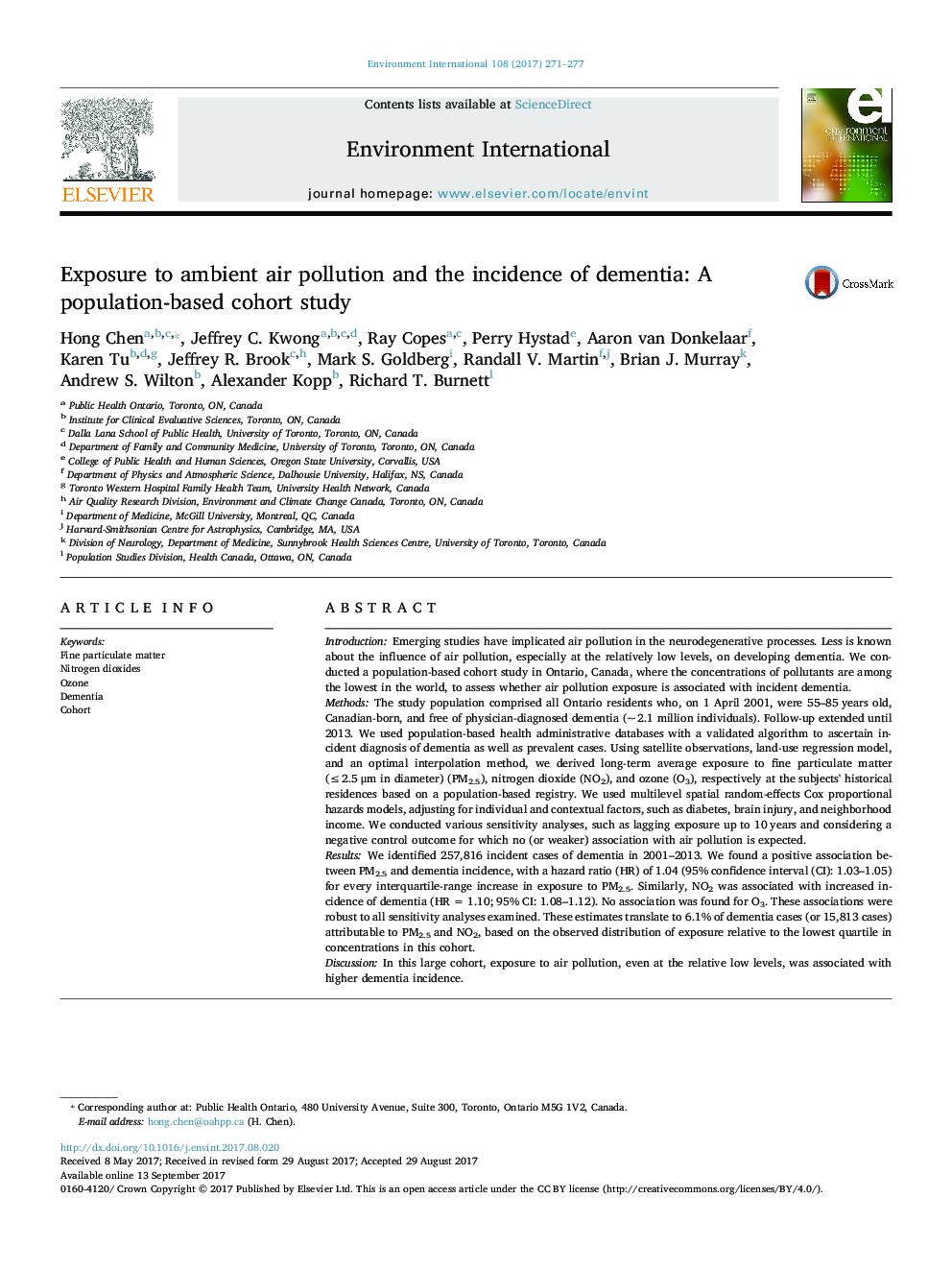| کد مقاله | کد نشریه | سال انتشار | مقاله انگلیسی | نسخه تمام متن |
|---|---|---|---|---|
| 5748216 | 1619022 | 2017 | 7 صفحه PDF | دانلود رایگان |
- A population-based cohort of ~Â 2.1 million adult residents in Ontario, Canada.
- Exposure to ambient nitrogen dioxide and fine particulate matter was associated higher incidence of dementia.
- 15,813 cases of dementia (or 6.1% of total cases) were attributable to elevated air pollution exposure in this cohort.
- Air pollution levels in Ontario are among the lowest in the world.
IntroductionEmerging studies have implicated air pollution in the neurodegenerative processes. Less is known about the influence of air pollution, especially at the relatively low levels, on developing dementia. We conducted a population-based cohort study in Ontario, Canada, where the concentrations of pollutants are among the lowest in the world, to assess whether air pollution exposure is associated with incident dementia.MethodsThe study population comprised all Ontario residents who, on 1 April 2001, were 55-85 years old, Canadian-born, and free of physician-diagnosed dementia (~ 2.1 million individuals). Follow-up extended until 2013. We used population-based health administrative databases with a validated algorithm to ascertain incident diagnosis of dementia as well as prevalent cases. Using satellite observations, land-use regression model, and an optimal interpolation method, we derived long-term average exposure to fine particulate matter (â¤Â 2.5 μm in diameter) (PM2.5), nitrogen dioxide (NO2), and ozone (O3), respectively at the subjects' historical residences based on a population-based registry. We used multilevel spatial random-effects Cox proportional hazards models, adjusting for individual and contextual factors, such as diabetes, brain injury, and neighborhood income. We conducted various sensitivity analyses, such as lagging exposure up to 10 years and considering a negative control outcome for which no (or weaker) association with air pollution is expected.ResultsWe identified 257,816 incident cases of dementia in 2001-2013. We found a positive association between PM2.5 and dementia incidence, with a hazard ratio (HR) of 1.04 (95% confidence interval (CI): 1.03-1.05) for every interquartile-range increase in exposure to PM2.5. Similarly, NO2 was associated with increased incidence of dementia (HR = 1.10; 95% CI: 1.08-1.12). No association was found for O3. These associations were robust to all sensitivity analyses examined. These estimates translate to 6.1% of dementia cases (or 15,813 cases) attributable to PM2.5 and NO2, based on the observed distribution of exposure relative to the lowest quartile in concentrations in this cohort.DiscussionIn this large cohort, exposure to air pollution, even at the relative low levels, was associated with higher dementia incidence.
Journal: Environment International - Volume 108, November 2017, Pages 271-277
